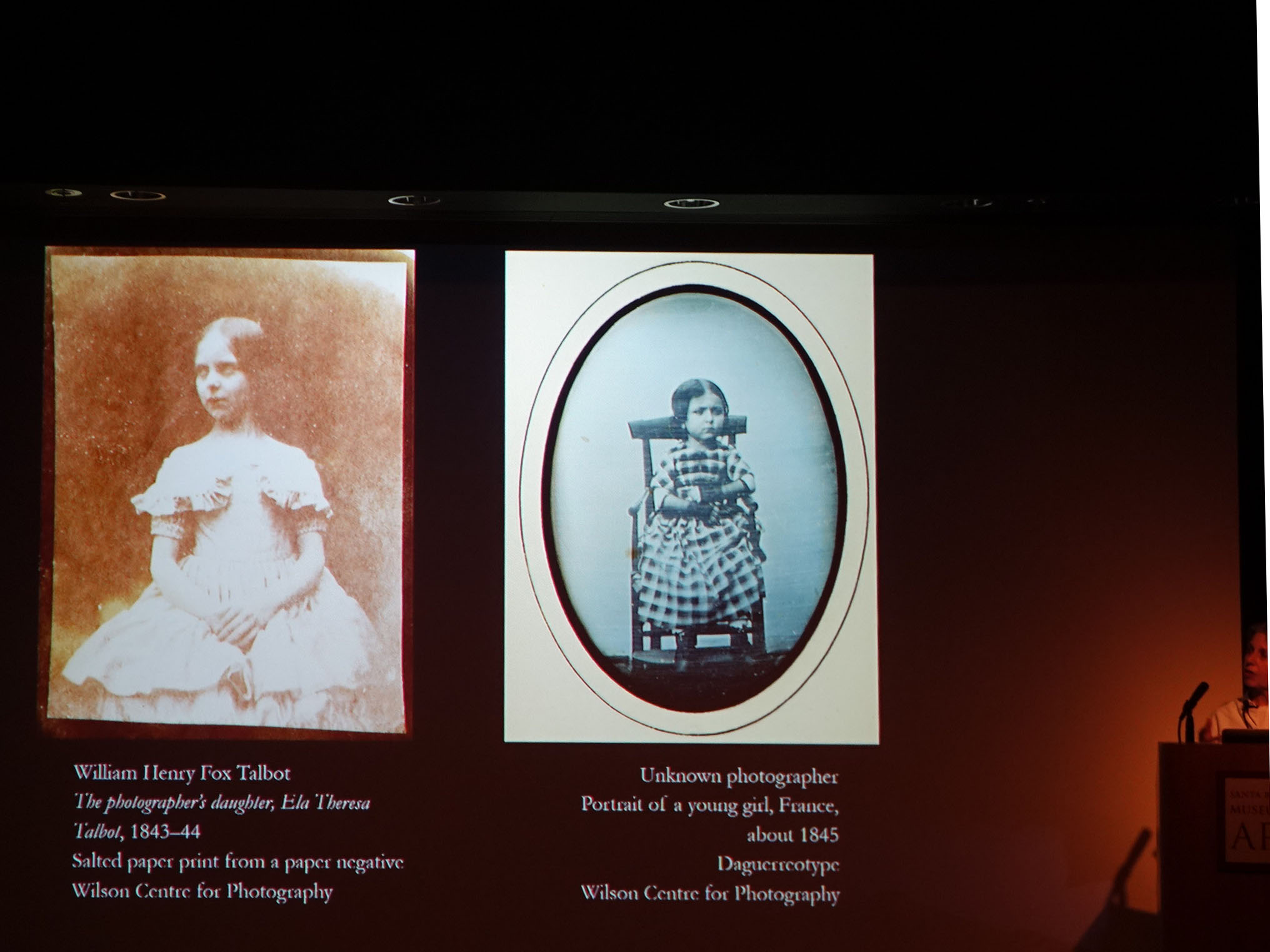By Robert Bernstein
“Salt & Silver: Early Photography 1840-1860” is a unique exhibit on view at the Santa Barbara Museum of Art September 8 – December 8.
Hope Kingsley is an expert on early photography and is a curator of Education and Collections at the Wilson Centre for Photography in England. We were fortunate to get to hear her talk about the exhibit and early photography at a sold-out event at the Museum.
Here are a few of my photos from her talk.
The title of the exhibit “Salt and Silver” refers to a certain early photography technique. Salt water was soaked into high quality paper and then a silver compound was painted on the surface.
This created a negative. Some printers would wax the negative paper afterwards to give a finer quality before printing the positive using the same salt and silver technique.
Some photographers waxed the paper before using it as a negative to give even more detail. But this lowered the sensitivity.
Daguerreotypes existed at the same time as the salt and silver technique and had more detail and generally were more realistic. This used an emulsion on a metal plate. But some photographers preferred the softer less detailed look of the salt and silver technique. I found that fascinating!
Here is a side by side comparison with salt and silver on the left and the French Daguerreotype technique on the right:

At some point the salt and silver technique also demanded royalties. The French government bought the rights to the Daguerreotype technique and offered it free in the public domain.
Both were replaced by “albumin” photography on glass plates. The albumin is made from egg whites. But the traces of sulphur in that badly react with the silver. The resulting image has to be stabilized. Perhaps with gold.
But even in the current times salt and silver is used to get a certain effect.
What is impressive about the exhibit is not only the early photographic technique. But also the early photographic subjects. This photo shows the construction of the Nelson monument in Trafalgar
Square in London:

Nude models of the era were already posing for painters. But when they posed for photographers it created problems for them and for the photographer. This level of realism was considered less socially acceptable. Here is one example of an unretouched nude model. She covered her face to reduce the problems it might create for her:

These photos were rarely displayed. Instead, they were used by artists to make paintings. This was cheaper than hiring a live model. This shows how this particular photo was used in a dramatic painting:

Typical exposure times were 20 seconds or so. Requiring staying very still.
Many photos that look like street scenes or other candid shots turned out to be carefully staged. One bit of evidence was that people in the street would have to stop moving.
Another bit of evidence in one case came from successive photos where the shadows moving showed the passage of 30 minutes. Not a natural street scene even though it looked like one!
The Crimean War was photographed. Not the actual battles because it was too hard to get the equipment in and out quickly enough. The negatives had to be prepared just before and just after the photos were taken.
But they did take “camp” photos of the soldiers in camp. They showed the stress on the soldiers rather than the idealized paintings of the era. One soldier in a photo in the exhibit died two years later from the stress of the war.
Photographers created photos for yearbook albums at places like Yale and Harvard. You had to buy individual photos and put them in your own album. Not like modern yearbooks.
But this meant that ordinary people might be photographed who otherwise would not be. For example, this fruit vendor at Harvard:

There was a Yale album created for a certain class years after graduation. It followed classmates who fought on both sides in the Civil War. A fascinating slice of history preserved there.
Some of these early photographers used family members as their subjects. Here was one example:

We are very fortunate to have this travelling exhibit here. It has been displayed at the prestigious Tate Museum in London and will go on to several other sites around the world. Be sure to check it out before it goes away after December 8!




